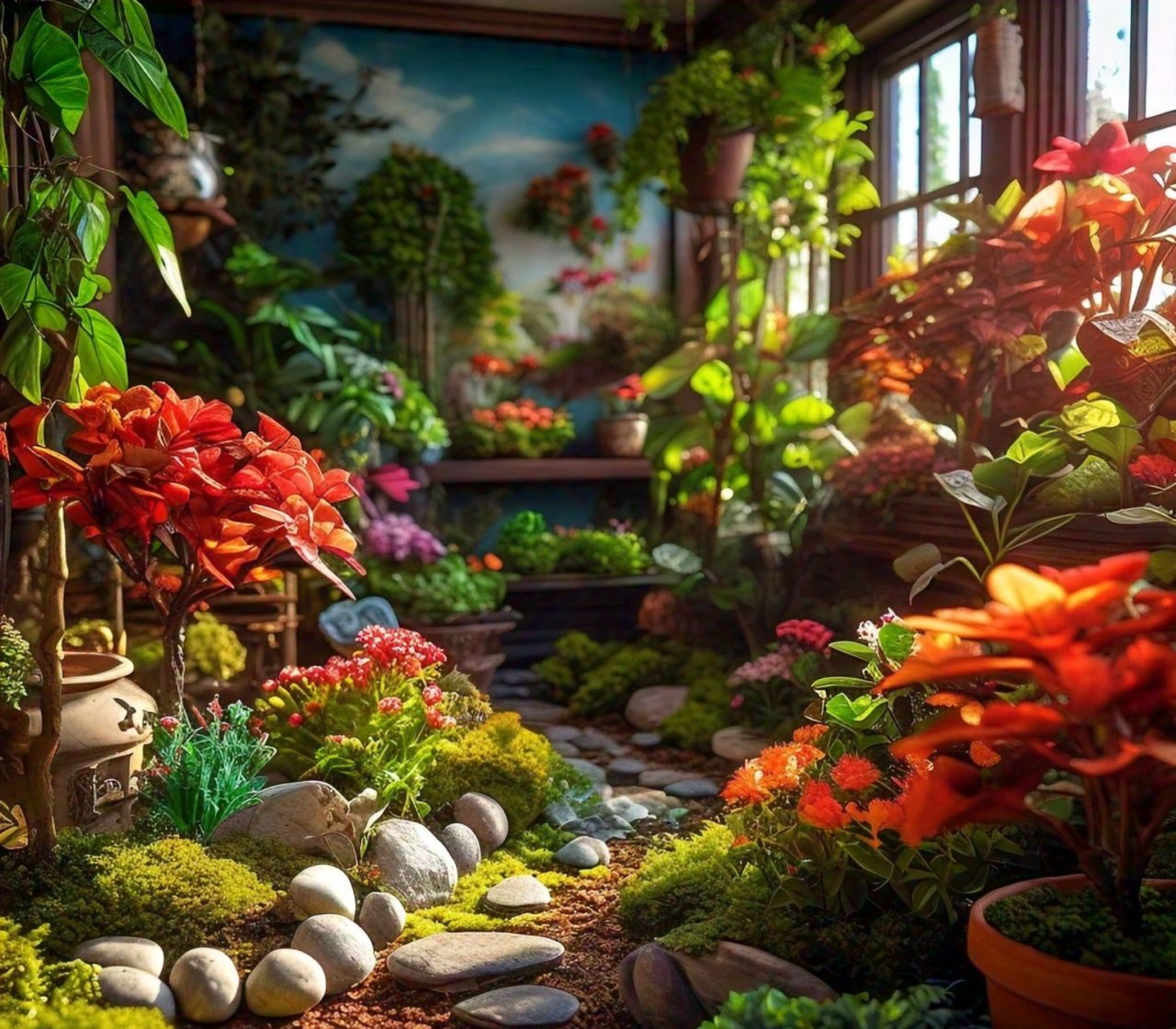Howdy, plant enthusiasts! Let me tell you a little story about those pesky fungus gnats. They think they can wander into your indoor garden as if they own the place. These tiny varmints are about as welcome as a snake in your boot, but fear not! With a few tricks up your sleeve, you’ll be sending those pesky critters packin’ in no time.
What Makes Gnats in Houseplants? The main reason for gnats is a small bug called a fungus gnat. These bugs like wet soil, especially when there are rotting leaves or too much fertilizer. Their babies live in the wet soil and eat fungus and rotting roots.
Spotting Fungus Gnats:
- Keep an eye out for small flies around your plants, especially near the soil, like they’re dancing.
- Grown-up fungus gnats are usually black or gray and about the size of mosquitoes.
- You might see tiny, white larvae moving around in the top layer of the soil, acting like they’re in charge.
- Your plants might seem smaller or droopy, with yellow leaves because the larvae are eating the roots and fungi in the soil.

Fungus Gnats Life Cycle: Fungus gnats have four stages: egg, larva, pupa, and adult. It takes about 3-4 weeks, depending on the weather. Female adults lay eggs in wet soil, and the larvae eat fungi and plant roots for about 2 weeks. Then, they become pupae before turning into adult gnats and causing more trouble!
Combating the Gnat Menace: A Multi-Pronged Approach

- Water Less: Don’t water your plants too much. Wait until the top part of the soil feels dry before watering again. This will make it harder for baby gnats to live in the soil.
Example: If you water your plants every day, try watering them every 2 or 3 days instead. Change this based on your plant’s needs and how wet the air is in your home.
- Use Hydrogen Peroxide: Mix hydrogen peroxide and water (1 part hydrogen peroxide to 4 parts water). Pour this mix on the soil to help kill the baby gnats quickly.
Example: For a medium-sized plant pot, mix 1/4 cup of 3% hydrogen peroxide with 1 cup of water. Pour this all over the soil. Do this every few days for 1-2 weeks.
- Sprinkle Diatomaceous Earth: Put a thin layer of diatomaceous earth (DE) on top of the soil. This powder is natural and kills insects by drying them out. Put more DE after watering your plants.
Example: Use a small strainer or shaker to sprinkle a thin layer of DE evenly on the soil. Make sure to use food-grade DE because it’s safer for pets and people.
- Use Good Nematodes: Get some tiny worms called beneficial nematodes. They will find and kill the baby gnats in the soil.
Example: Buy beneficial nematodes (Steinernema feltiae) from a garden store or online. Mix them with water as the instructions say. Then, put the mixture on the soil around the plants with gnat problems.
- Yellow Sticky Traps: Put sticky traps near your plants to catch the adult gnats. They like the color yellow, so they will fly to the traps and get stuck.
Example: Cut yellow sticky traps into smaller pieces. Put these pieces on sticks or toothpicks. Then, put the sticks into the soil near your plants with the yellow side facing out. Change the traps when they are full of gnats.
- Apple Cider Vinegar Trap: Make your own gnat trap with apple cider vinegar, water, and a little bit of dish soap. The vinegar will attract the gnats, and the soap will trap them.
Example: In a small bowl or cup, mix 1/4 cup of apple cider vinegar, 1/4 cup of water, and a drop of dish soap. Put this trap close to the plants with gnats. Throw away the trapped gnats every few days.
- Prevent Gnats: Check the soil moisture often and don’t use too much fertilizer. Take away dead leaves and use soil that drains well to stop gnats from coming back.
Example: Before watering, use your finger to feel if the top inch of soil is dry. Only water if it feels dry. Use less fertilizer, only half the amount suggested and only when the plant is actively growing.
- Repot the Plant: If a plant has too many gnats, you may need to repot it with new, clean soil. Remove as much of the old, infested soil as you can first.
Example: Carefully take the plant out of its current pot. Shake off the soil with the gnats. Rinse the roots with water to remove any remaining gnat babies or eggs. Put the plant in a clean pot with new, sterile soil.
Remember:
Consistency matters! It could take a bit of effort and time to remove those pesky fungus gnats and keep your indoor garden beautiful. But if you follow this plan, you can do it. Remember to grab your watering can and find some natural solutions. Let’s turn your plant paradise into reality again!

